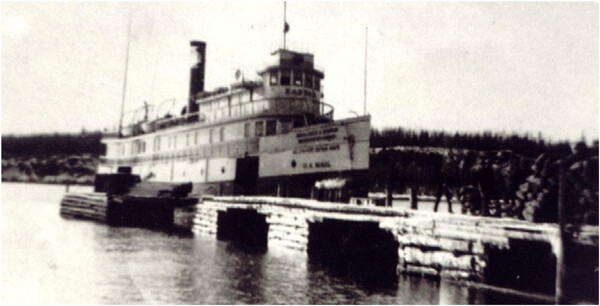News & Articles
Browse all content by date.

None of us was present to know European exploration and expansion into this area was done by the French who arrived here by making the trip from the eastern seaboard one paddle swing at a time. Trade and possible riches like Middle and South America was the aim. The century long history of the fur trade shows that result of exploration proved a success. Most everyone knows of the Hudson Bay Company, largest of the English successors who essentially took over the trade from the French. They were not alone. Independent traders, Northwest Company, XY, and Revillon Feres had parts as well with the French firm maintaining Canadian posts in this region into the 1920’s. For the most part every blanket, gun, axe, or bead that left the east coast got here one paddle swing at a time. Bales of fur made the return in exactly the same labor intensive way. Water transport was the easiest way, but it was by no means always an easy thing to do.

After the War of 1812 and essentially until the Civil War the arm of US interests in the region grew slowly stronger and more prominent. There, too, water transport was the main way expansion took place. The fur trade saw some sailing ships built and used on the Great Lakes, but that use exploded over time with considerable ship building taking place in Michigan, at the Sault, and Superior. Transport of goods and people by sail was considerably faster and less labor intensive than needing a crew near a dozen for a thirty five foot cargo canoe. The same size crew able to handle 100 times more cargo meant development was bound to go wild. With so many resources basically free for the taking fish and lumber were harvested as quickly as technology would allow.

We don’t often think how things we take for granted today were technological advances that in their time were well beyond what the computer has done in our world. The initial fur trade, as example, relied on simple means to harvest beaver for trade. The steel beaver spear was one of the tools traded. When was the last time you got near enough a beaver to spear it? The steel trap that showed up late in the game (and in my estimation was the game ender) was a technological jump beyond former imagining. With a steel trap you didn’t have to get close to a beaver. You didn’t have to be there at all. You could be miles distant setting other traps, each ready to do its job on a round-the-clock basis. The steel trap was ideal for taking beaver in winter, too, a thing impossible before. The steel trap was absolutely a game changer.

Apply the same to the ability to build reliable steam boilers to drive ships without relying on wind. Early efforts using steam to operate a rocking beam that turned side wheels to provide propulsion (a good example met its end off Rock of Ages Light at Isle Royale) were replaced by double and triple expansion systems that drove a ship/s screw. Screw is an apt term because a ship can be describes as being driven forward by a continuous underwater screw traveling just below the vessel. A ship’s screw, akin to a swing of the paddle, is slow but it is continuous and non-stop compared to paddle propulsion with gaps between applications of force. Propeller is a term for airplane propulsion or for small high rpm engines used on small boats. A screw drives a ship. Some older vessels used a revolution counter to estimate distance traveled. Each turn of the main shaft represented an amount of forward motion.

Once a system of locks for the Great Lakes was in place the routes once used by trade canoes were taken by 200, 500, 700, and eventually 1,000 foot ships, though on the Great Lakes it is the convention to call them boats. I don’t need to go into that heyday. Nor is it necessary to explain how the development of reliable modern trucking and all season high speed highways changed the role for both rail and water transport. We take trucking and next-day delivery so much for granted it’s easy to miss its impact on business and conventional retailing. What was once called Mail Order and was an option is now a regular thing called Overnight Delivery.
No matter how quickly a package arrives at your door or how mega monster fast your internet it all began as progress moving forward at the rate of a paddle swing in time. Only a century ago the North Shore had flocks of small boats for fishing as well as moving people and other cargo from place to place along the shore. Package boats sometimes called the mosquito fleet were an essential part of life along the shore and inland, too, where much cargo eventually made its way.
Evidence of the importance of water transport along the North Shore has grown so scarce that today we think in terms of a few major ports. The small landing places and cargo docks are gone except for the one at Hovland. Built with a true grassroots effort it has endured one hundred years of Lake Superior. But nothing lasts forever. The historic Hovland Dock needs an assist to protect and preserve its history as the last representative of earlier commerce. If preservation of this piece of history is important you can help by sending an e-mail with your opinion and hopefully your support for a designated historic site to Land Commissioner Lisa Kerr at the lisa.kerr@co.cook.mn.us with your views. Time is running out on this remnant of our history and heritage. Public support for a historic site at the dock will help generate momentum to stabilize the dock while time permits. Each public comment is like a small paddle swing in time brining us closer to a workable plan.

| Tweet |


